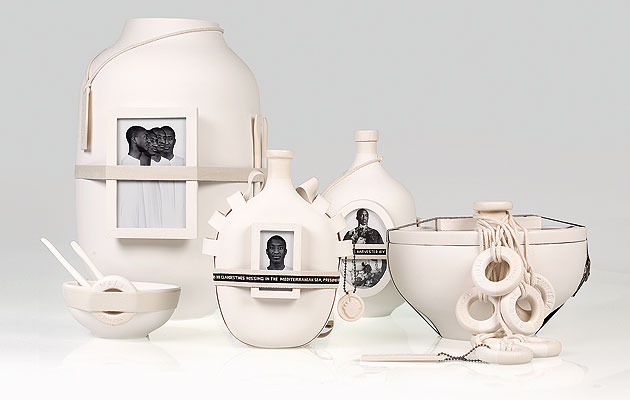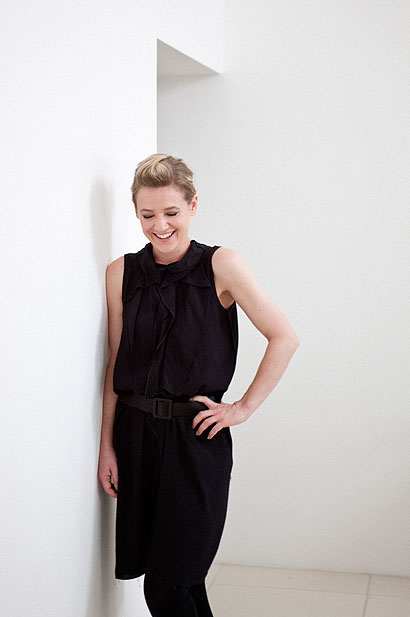|
|
||
|
If you’ve spent the past four years chasing her exhibitions around the capital, breathe easy – celebrated curator Libby Sellers is about to open her first permanent gallery in central London We need more design galleries like Libby Sellers,” says Didier Krzentowski, the owner of Galerie Kreo in Paris. “We need people who nurture designers and their work, and who are passionate about design and pushing the process of making forward.” That’s praise worth framing, coming from one of the world’s most influential contemporary design gallerists. But until now the work exhibited by Australian-born, London-based curator Libby Sellers has been a little tricky to catch, as her pop-up practice has constantly changed venues. That is about to change. In September, Gallery Libby Sellers gets a permanent address on Berners Street in central London. It’s a crucial next step for the business, and a welcome addition to London’s design scene. The gallery launched four years ago, with the critically praised exhibition Grandmateria, which featured work by Moritz Waldemeyer, Stuart Haygarth, Peter Marigold, Julia Lohmann and Gero Grundmann – a stable of London-based designers that helped define an era. It was a time when a group of recent design graduates were exploring new possibilities for manufacturing and showing work, fed up with the constraints of serial production and its dated system of royalty payments. It was also an era when the concept of “art-design” (a term Sellers does not agree with) became a topic in mainstream media, largely prompted by the astronomically high prices fetched at auction by limited-edition design pieces. Both the media-hype and the economy have cooled since then, but the role of the gallery as a generator for ideas and discussion about the meaning and function of design is more necessary than ever. “Design has to have a reason,” Sellers says when we meet a few weeks before the gallery opening. “I’m interested in design that pushes a boundary or asks a question or answers one – that’s critical design, and that’s what I’m after.” Sellers’ role as a design curator and gallery owner inhabits a space that is unique to the early 21st century. Her career would not have been possible 30 years ago and, if the cuts to arts funding continue, it will not be possible in the future. She trained as a “design thinker” at the Royal College of Art and on the Victoria and Albert Museum’s MA in History of Design. She then went to work at the Glasgow 99 architecture and design festival with the current Design Museum director Deyan Sudjic and Guardian architecture critic Rowan Moore. As a curator at the Design Museum, working under Alice Rawsthorn, Sellers played a crucial role in introducing contemporary design works into the museum environment, with exhibitions such as Designers in Residence. Her decision to set up on her own can be seen as an indication that experimentation and debate within design might find a more natural home in the context of a small gallery than a large institution.
credit Gideon Hart Gallery Libby Sellers’ 1,700sq ft space will be a platform for these debates. Sellers has divided the space into two rooms and intends to keep one of them for work and events curated (but not initiated) by herself. “The joy of having a permanent gallery is that I can actually be more spontaneous in terms of showing work,” says Sellers. ”I can respond in a different way to what is going on around me, than I could with the pop-ups. Now I can invite people to pop up in my space.” With her temporary displays, which made use of London’s many empty retail premises or just curious voids in the urban fabric, Sellers made conceiving a show look like a breeze – something that could be achieved almost on the spur of the moment. That wasn’t the case, of course. Sellers develops close relationships with her designers and each show is meticulously commissioned and planned with them. It’s a process in which Sellers plays a crucial role, both as sounding board and problem-solver. “I like to keep in close contact with the designers throughout the creative and manufacturing processes – that’s why I tend to work with designers based in the UK and Europe,” Sellers says. “This way I can get to them quickly and keep in close contact.” The opening exhibition at Gallery Libby Sellers’ permanent venue is by design duo FormaFantasma. First shown during Design Miami/Basel earlier this year, the exhibition consists of two bodies of work, both of which have the same story at their heart: the flow of information, culture and crafts between north Africa and southern Italy for hundreds of years. Moulding Tradition is a series of vases, first seen at the duo’s Eindhoven graduation show, that tells a story both of this exchange and of an actual living person and their voyage from their native land to Sicily. Colony, on the other hand, is a new commission: it is a series of blankets that read like large-scale postcards from African countries colonised by Italy in the 1930s. “You can always appreciate their work on a purely artisanal or beautiful level, but you can always dig deeper as well,” Sellers says. “The FormaFantasma work is the perfect embodiment of what a gallery should be doing, because these works need the space of a gallery to tell the story. They are laden with a message, and in a retail or manufacturing environment that message gets lost.” Gallery Libby Sellers, 41-42 Berners Street, London
credit Joakim Blockstrom |
Words Johanna Agerman Ross
Images Luisa Zanzani |
|
|
||





















